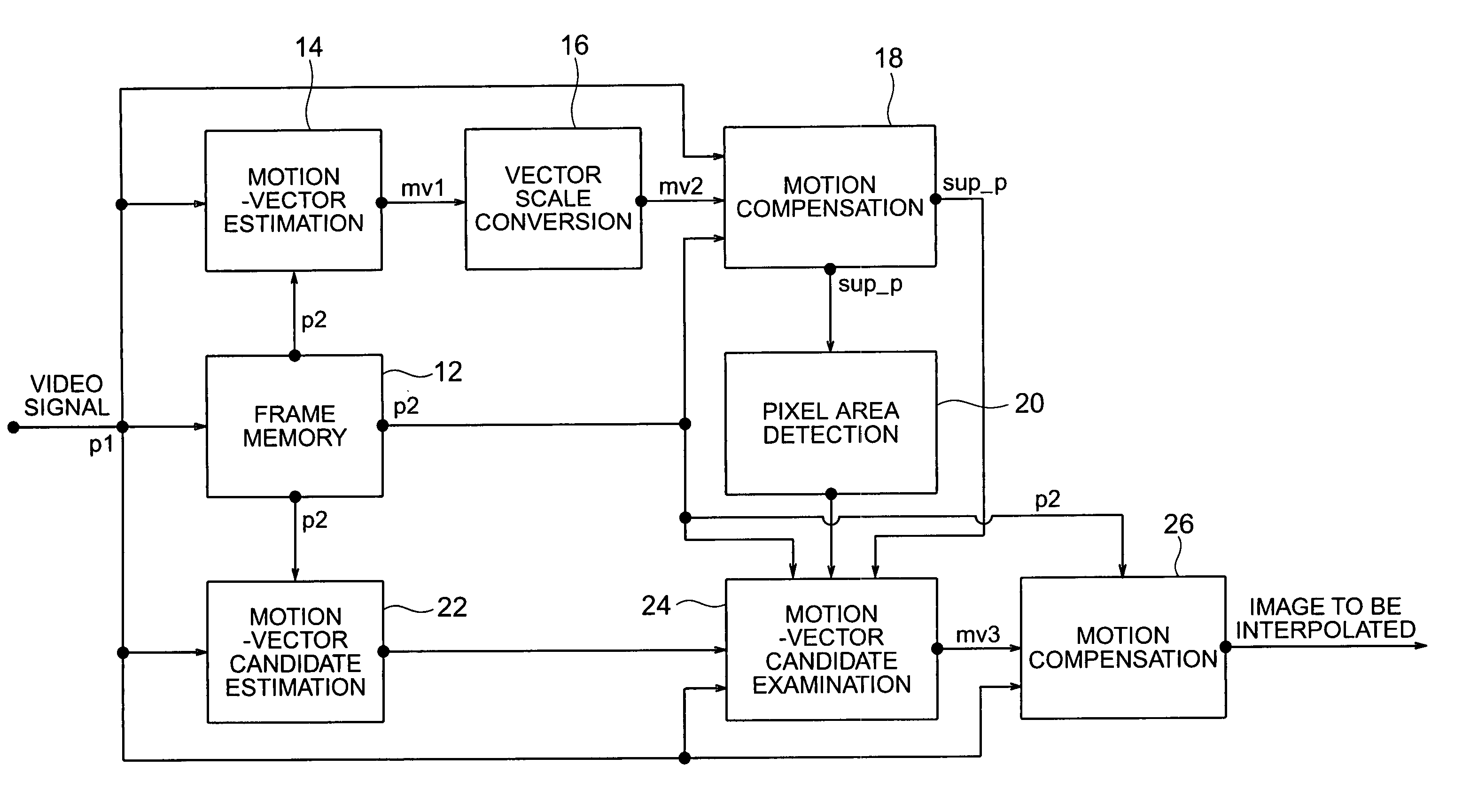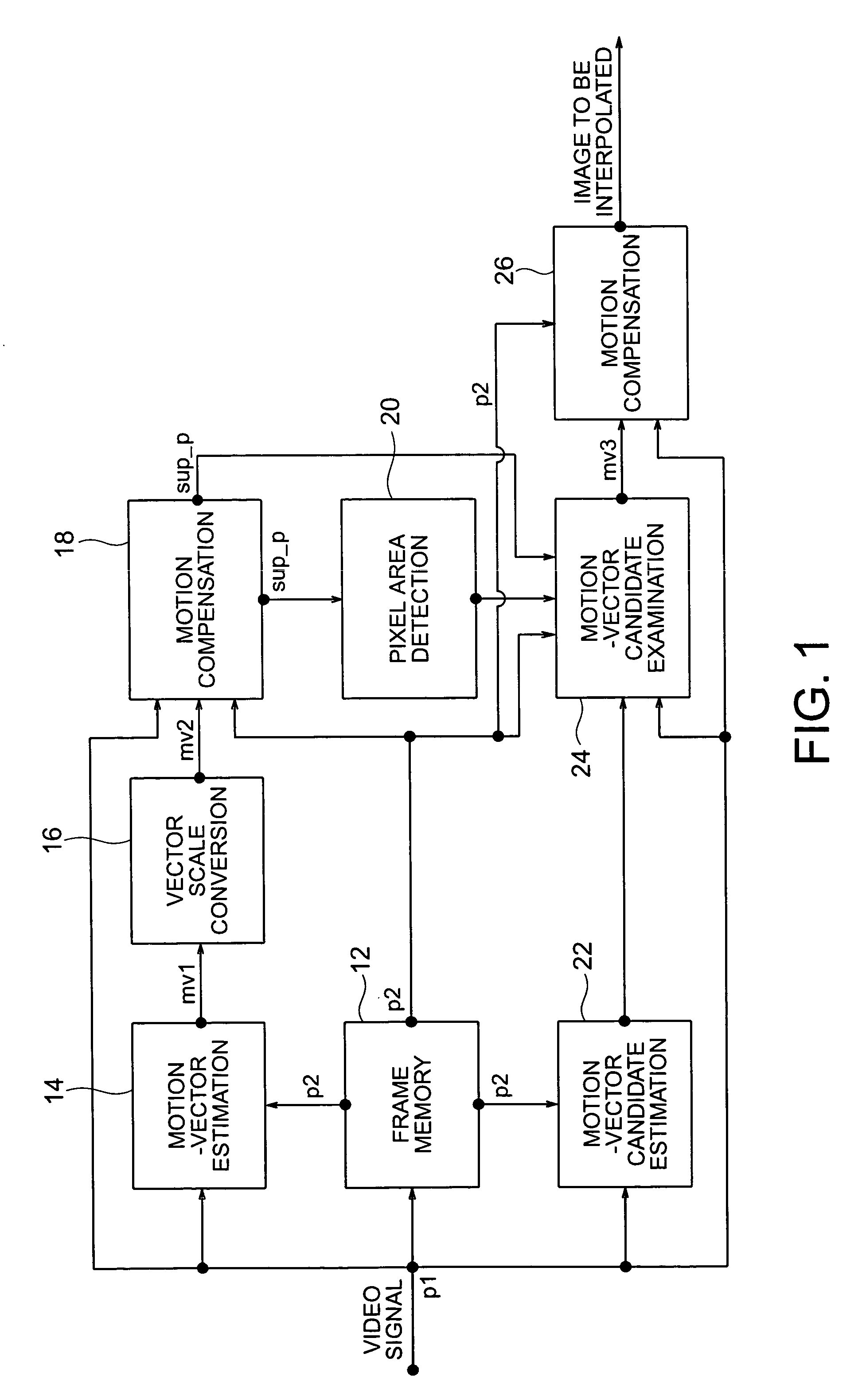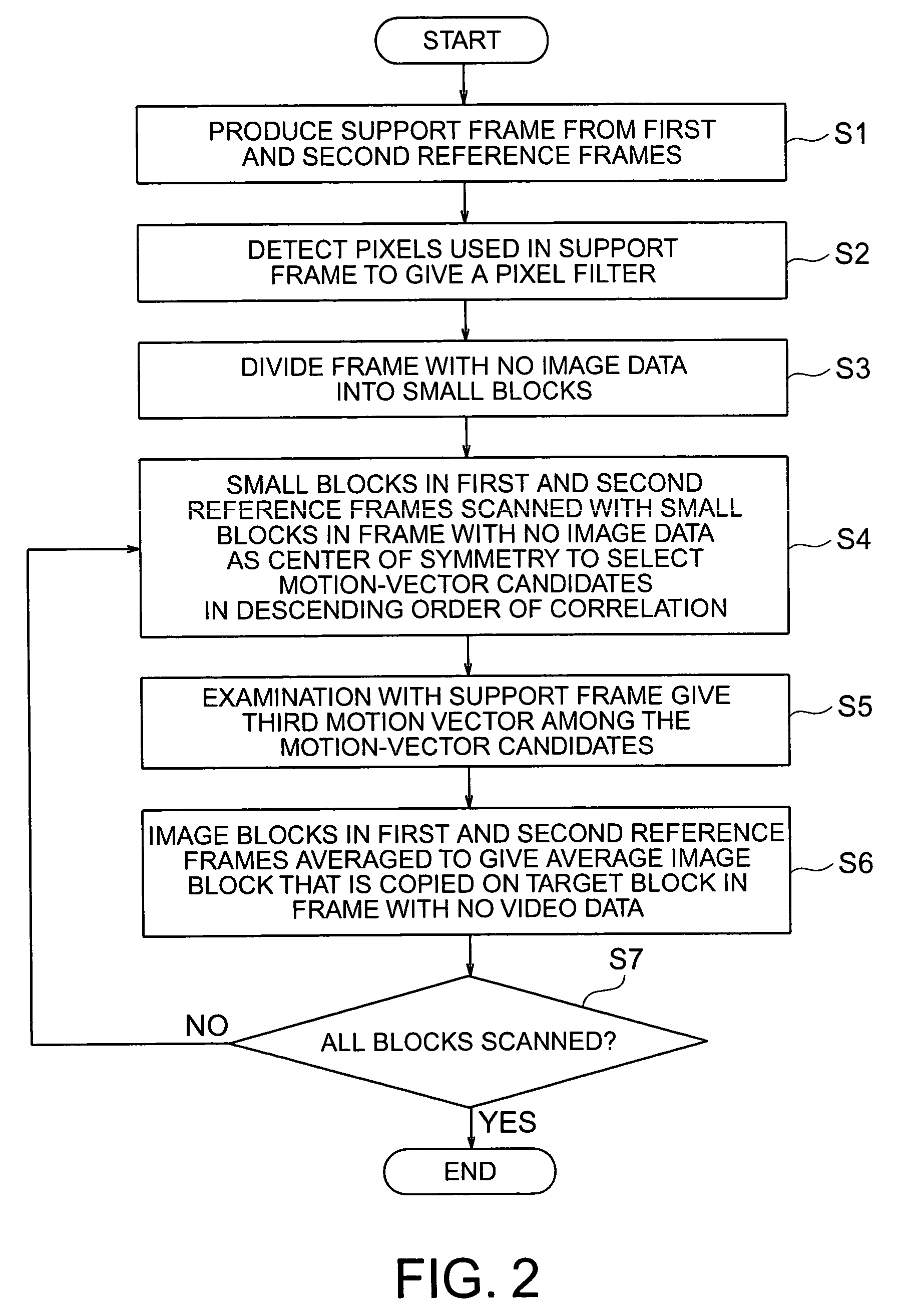Frame interpolation and apparatus using frame interpolation
a frame and apparatus technology, applied in the field of frame interpolation and an apparatus, can solve problems such as gap or superimposition in the frame to be interpolated, interpolation technique solving this problem, and compensating frame interpolation techniqu
- Summary
- Abstract
- Description
- Claims
- Application Information
AI Technical Summary
Benefits of technology
Problems solved by technology
Method used
Image
Examples
first embodiment
[0063]A method of frame interpolation, a first embodiment of the present invention, will be disclosed with reference to FIGS. 1 to 11.
[0064]Shown in FIG. 1 is a frame interpolation apparatus that executes the first embodiment of frame interpolation.
[0065]The frame interpolation apparatus shown in FIG. 1 is equipped with a frame memory 12, a motion-vector estimator 14, a motion-scale converter 16, a motion compensator 18, a pixel area detector 20, a motion-vector candidate estimator 22, a motion-vector candidate examiner 24, and another motion compensator 26.
[0066]The first embodiment of frame interpolation will be disclosed in up-converting a 60-Hz non-interlaced video signal into a 120-Hz non-interlaced video signal, although this invention is not limited to this application.
[0067]Reference signs p1 and p2 shown in FIG. 1 indicate a first reference frame and a second reference frame, respectively, of an input video signal. The first reference frame p1 is an anterior frame and the s...
second embodiment
[0119]A method of frame interpolation, a second embodiment of the present invention, will be disclosed with reference to FIGS. 12 to 28.
[0120]Shown in FIG. 12 is a frame interpolation apparatus that executes the second embodiment of frame interpolation.
[0121]The frame interpolation apparatus shown in FIG. 12 is equipped with a frame memory 12a, a motion-vector estimator 14a, a motion-scale converter 16a, a motion compensator 18a, a pixel area detector 20a, a motion-vector candidate estimator 22a, a motion-vector candidate examiner 24a, and another motion compensator 26a.
[0122]The second embodiment of frame interpolation will be disclosed in up-converting a 60-Hz non-interlaced video signal into a 120-Hz interlaced video signal, although this invention is not limited to this application.
[0123]Reference signs p1 and p2 shown in FIG. 12 indicate a first reference frame and a second reference frame, respectively, of an input video signal. The first reference frame p1 is an anterior fra...
fourth embodiment
[0246]A method of frame interpolation, a fourth embodiment of the present invention, will be disclosed with reference to FIGS. 31 and 33.
[0247]The fourth embodiment of frame interpolation method uses MPEG data.
[0248]Shown in FIG. 31 is a frame interpolation apparatus that executes the fourth embodiment of frame interpolation.
[0249]The frame interpolation apparatus shown in FIG. 31 is equipped with a decoder 10, a decoded-signal determiner 11, a frame memory 12c, a motion-vector estimator 14c, a motion-scale converter 16c, a motion compensator 18c, a pixel area detector 20c, a motion-vector candidate estimator 22c, a motion-vector candidate examiner 24c, and another motion compensator 26c.
[0250]The fourth embodiment of frame interpolation will be disclosed in up-converting a 60-Hz non-interlaced video signal into a 120-Hz non-interlaced video signal, although this invention is not limited to this application.
[0251]Reference signs p1 and p2 shown in FIG. 31 indicate a first reference...
PUM
 Login to View More
Login to View More Abstract
Description
Claims
Application Information
 Login to View More
Login to View More - R&D
- Intellectual Property
- Life Sciences
- Materials
- Tech Scout
- Unparalleled Data Quality
- Higher Quality Content
- 60% Fewer Hallucinations
Browse by: Latest US Patents, China's latest patents, Technical Efficacy Thesaurus, Application Domain, Technology Topic, Popular Technical Reports.
© 2025 PatSnap. All rights reserved.Legal|Privacy policy|Modern Slavery Act Transparency Statement|Sitemap|About US| Contact US: help@patsnap.com



